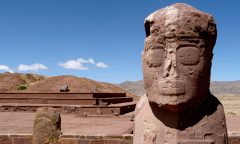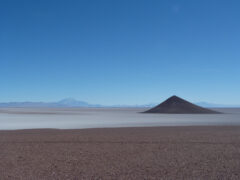Top 5 Off the Beaten Track highlights in NW Argentina

Hugo Lesser is an Anglo-South America living in Salta in north west Argentina. Here he shares his favourite five, lesser-known highlights of north west Argentina. He is the founder of Estados, which sells beautiful Argentine leather goods.
1. Cafayate

Cafayate is a small former Spanish colonial town 180km south of the city of Salta, and is the home to the highest altitude wines in the world. In contrast to sprawling Mendoza, Cafayate’s compact size allows visitors to explore its excellent vineyards by bike as well as by car. The majority offer tours and tasting. Since the colonial era, Cafayate has specialised in the white Torontes grape, brought from Spain by conquistadors before a blight eradicated it from Spain. In recent years however Cafayate has diversified, and it now produces a range of different grape varieties, both red and white. Lcafayate is situated at around 5000ft above sea level, and the contrast in temperature between the typically warm sunny days and the cool nights, particularly in winter, increases sugar levels, bringing the best out of the grapes. In recent years, a new generation of boutique hotels have opened up in and around the town, converted from old colonial era houses with courtyards, or set amidst endless rows of vines with views to the sun-drenched ‘pre-Andes’ mountain ranges beyond. Visitors to Salta often plan a day here, and then regret not having more time. Don’t miss the incredible rock formations on the road between Salta and Cafayate either.
2. Purmamarca

A little further north, Purmamarca in Juyjuy province is a small town in the Humahuaca gorge offering stunning colourful mountainous surroundings, and a selection of boutique hotels and restaurants. It makes a great base from which to explore the surrounding area, highlights of which include the Hill of Seven Colours, ancient cave paintings, the Paseo de los Colorados, (a gorge surrounded by rust-coloured sedimentary rock formations), and a seventeenth century colonial church containing art from the Cuzco School. Purmamarca’s artisan markets and cobbled streets combine to make the town one of the most colourful and memorable places in Argentina’s Andean north west too. You can also strike out further afield to the Salinas Grandes (salt flats), or if you keep going you can cross into the Atacama desert in northern Chile.
3. Quilmes

The word Quilmes is best known as the name of the ubiquitous Argentine lager, few people however know the story behind the name. The Quilmes were a tribe whose capital is a 45 minute drive south of Cafayate along Ruta 40. They made their mark on history by being the only indigenous tribe to successfully repel first the Incas and then – despite the gulf in technology between the two sides – the Spaniards for nearly 200 years. They achieved this thanks to the superb defensive location of their citadel, on high ground and with sweeping views in all directions, and their courage and fighting ability. When the Spanish did eventually defeat them, the survivors were relocated to a place to the south of Buenos Aires, since also known as Quilmes. It was in this second Quilmes that Argentina’s first brewery was established, through which the original tribe’s legacy lives on, in a way. The ruins of their original citadel are a joy to visit, with views to rival any – and in an area hardly lacking in breath-taking vistas. You can climb up to old lookout posts, while one of the local guides on hand will talk you through the history of the tribe and the discoveries archaeologists have recently made about their way of life on site.
4. San Lorenzo

San Lorenzo is a small town 5 miles outside the city of Salta. It is known as a summer resort thanks to its the trekking, mountain biking and riding available in the adjoining national park. 2 miles further on beyond San Lorenzo though is Lesser, where the locals go to relax and convene with nature. You can fish, barbecue, or just soak up some rays alongside its two rivers, the Rios Lesser and Castellanos, or follow the paths beside the rivers for miles up into the lush surrounding hills. There are local Cabanas (wood cabins) to stay in, while Finca Lesser, the local estancia, offers riding including a traditional asado on its 40,000 hectares.
5. Santa Rosa de Tastil

Another pre-Columbian ruins site, this time north-west of Salta, on the way to San Antonio de los Cobres along the old road to Chile. This high-altitude site was largely unexplored until a couple of years ago, and you could freely wander, picking up centuries old pottery shards and arrow head, however now, following archaeological research, there are guides and information available to learn more about the people who lived here. We don’t know what they were called, but they were conquered by and then co-existed with the Incas for several decades before the Incas decided to move them to somewhere else. As such the Spanish only ever found the ruins. Aside from glimpses into pre-Columbian life, the site itself, as well as the road leading to it, are truly stunning. Bring a picnic though, as there’s not a lot going on in the local village a mile or so down the road.
Tailor-made holidays
Flexible, custom-made holidays to Latin America created to match your exact requirements: our tailor-made itineraries are as unique as the clients for whom they are designed.
Design my tripPapagaio
Your edit for Latin American inspiration
Our exciting range of articles on Latin America explore everything from iconic destinations and lesser-known cultural gems to delicious traditional recipes. You’ll also find exclusive travel tips, first-hand client reviews and the chance to get your personal questions answered by our travel experts.
View Extraordinary Inspiration






































